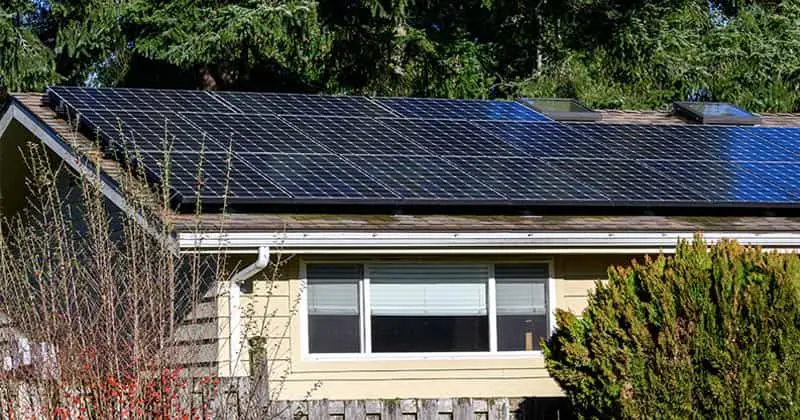As I explore the realm of off-grid living and the alternative housing solutions it entails, I find myself contemplating the potential drawbacks of one particular trend: container houses. These compact living spaces, constructed from repurposed shipping containers, offer an appealing blend of affordability, sustainability, and adaptability. However, in order to critically analyze the concept, one must consider the various disadvantages inherent in such structures. By examining the limitations and challenges associated with container houses, we can attain a more nuanced understanding of their viability as a long-term housing solution in the modern world.
Maintenance and Upkeep
Lack of insulation
When it comes to container houses, one major disadvantage is the lack of insulation. Shipping containers are designed for transporting goods, not for providing comfortable living spaces. The thin metal walls of these containers do not provide sufficient insulation to keep the interior temperature stable. As a result, container houses are more susceptible to extreme temperatures, making it challenging to maintain a comfortable living environment.
Rust and corrosion
Another maintenance issue that container houses face is rust and corrosion. Shipping containers are typically made of steel, which is prone to rusting when exposed to moisture and harsh weather conditions. Over time, the constant exposure to environmental elements can cause the containers to deteriorate and weaken. Regular inspections and maintenance are necessary to prevent rust and corrosion from compromising the structural integrity of the container house.
Potential for leaks
Container houses may also face the risk of leaks. As shipping containers are not originally designed to be houses, they do not have the necessary features to prevent water infiltration. The joints and seams of containers are susceptible to leakage, especially during heavy rainfall. This can lead to water damage and the growth of mold or mildew within the interior of the house. Regular maintenance and sealing of any potential areas of leaks are essential to avoid costly repairs in the future.
Limited Space and Design Options
Size constraints
One of the drawbacks of container houses is the limited space they offer. Shipping containers come in standard sizes, typically 20 or 40 feet long, 8 feet wide, and 8.5 feet tall. While these dimensions may seem sufficient for storage purposes, they can be quite restrictive for creating a comfortable living space. The compact size of container houses may pose challenges when it comes to accommodating a growing family or fulfilling specific lifestyle needs.
Structural limitations
Container houses also have structural limitations that can dictate the design options. The original purpose of shipping containers is to be stacked and transported efficiently, which means they are not inherently designed to support additional weight or modifications. Adding extra floors or altering the structural layout can be challenging and may require extensive reinforcement or cutting into the container, compromising its integrity.
Limited customization
Due to their fixed dimensions and structural limitations, container houses offer limited customization options. The exterior appearance of container houses usually retains the industrial look of the shipping container, which may not appeal to everyone. Although some modifications can be made to alter the aesthetics, the overall design options are constrained by the container’s inherent structure. This may limit the ability to create a personalized and unique living space.
Limited Availability

Limited supply
While shipping containers are widely used for transporting goods worldwide, the availability of suitable containers for building houses can be limited. Containers suitable for residential purposes need to meet certain criteria, such as having minimal corrosion or damage. Finding containers in good condition can be challenging, especially in areas where container houses are not yet popular. The limited supply of suitable containers can hinder the construction of container houses.
High demand
Despite the limited supply, container houses have gained popularity in recent years, leading to increased demand. The appeal of affordable and eco-friendly housing options has attracted many individuals and families to explore container houses as an alternative to traditional homes. This high demand can result in increased competition among buyers and potentially drive up the prices of shipping containers. The combination of limited supply and high demand can make the acquisition of containers for building houses more difficult and expensive.
Location restrictions
The availability and feasibility of container houses can also be influenced by location restrictions. Some areas may have zoning regulations or building codes that prohibit or restrict the construction of container houses. Local authorities may impose certain limitations on building materials, architectural styles, or minimum living requirements. These restrictions can pose challenges for individuals interested in building container houses in specific locations, limiting their options for off-grid living or alternative housing solutions.
Permitting and Zoning Challenges
Building regulations
Obtaining the necessary permits and complying with building regulations can be a significant challenge when it comes to container houses. Building codes and regulations vary from one jurisdiction to another, and not all regions have specific guidelines for container houses. This lack of standardized regulations can make it difficult for individuals to navigate the permitting process. It may require additional time, effort, and resources to secure the required permits, inspections, and certifications for a container house.
Zoning restrictions
In addition to building regulations, zoning restrictions can also pose challenges for container houses. Zoning laws typically dictate land use, density, and building types in specific areas. Some zoning regulations may not classify container houses as permitted dwellings, limiting their construction to certain zones or requiring special permissions. It is essential to thoroughly research and understand the zoning requirements of a chosen location before embarking on building a container house.
Obtaining necessary permits
The process of obtaining necessary permits for a container house can be complex and time-consuming. Building authorities often require detailed plans and documentation to ensure that the container house complies with safety, structural, and environmental standards. This may involve engaging architects, structural engineers, or other professionals to prepare the required documents. The additional costs and bureaucratic procedures associated with obtaining permits can be a deterrent for individuals interested in pursuing container houses as a housing option.
Difficulty in Expansion or Modification

Lack of flexibility
One of the challenges of container houses is the lack of flexibility for expansion or modification. The fixed dimensions and structural limitations of shipping containers make it difficult to add or remove sections without significant alterations. While some creative solutions exist, such as joining multiple containers or using additional structures alongside containers, these approaches may not always be feasible or desired. The restricted flexibility can limit the adaptability of container houses to changing needs or preferences over time.
Cost and complexity
Expanding or modifying a container house can be a costly and complex undertaking. Any alterations to the container’s structure will require professional expertise to ensure the structural integrity is maintained. Cutting into the container walls, reinforcing sections, or integrating new elements can involve intricate engineering considerations and additional expenses. The complexity of modifying a container house, combined with the associated costs, may deter individuals from pursuing any substantial changes or expansions.
Structural integrity concerns
Modifications or expansions to container houses can also raise concerns about the structural integrity of the overall construction. Shipping containers are designed to withstand the rigors of transportation, but modifications can introduce additional stresses and vulnerabilities. Alterations that compromise the structural integrity of the container can result in safety hazards, including sagging floors, weakened walls, or even collapse. Ensuring proper engineering assessments and reinforcements are in place is crucial when considering any expansion or modification to a container house.
High Initial Cost
Transportation and delivery expenses
One significant disadvantage of container houses is the high initial cost associated with transportation and delivery. Shipping containers are bulky and heavy, requiring specialized equipment and logistics for transportation. The expenses involved in transporting the containers to the desired location can be substantial, especially if the site is in a remote or inaccessible area. These transportation costs can significantly contribute to the overall cost of building a container house.
Site preparation costs
Before the construction of a container house can begin, site preparation is necessary. Clearing the land, leveling the ground, and providing suitable foundation options can add to the overall expenses. Depending on the condition of the site and any necessary infrastructure improvements, these costs can vary. The need for utilities, drainage systems, or landscaping adjustments can further increase the site preparation costs, making container houses less cost-effective compared to traditional housing options.
Additional modifications and installations
Container houses often require additional modifications and installations to ensure suitable living conditions. These modifications can include adding windows, doors, ventilation systems, insulation, and electrical wiring. While these modifications are necessary to transform a shipping container into a habitable dwelling, they can add to the initial cost. The expenses associated with these modifications should be considered when evaluating the overall affordability of container houses.
Insufficient Insulation and Energy Efficiency

Heat transfer issues
The inadequate insulation of container houses can result in heat transfer issues. Due to their metal composition, containers can conduct heat from the outside to the interior, making it challenging to maintain comfortable temperatures. In warmer climates, container houses can become excessively hot, requiring additional cooling measures. In colder regions, heat loss through the walls can lead to higher heating demands. The lack of proper insulation can substantially impact the energy efficiency and comfort of the occupants, resulting in increased energy consumption and costs.
Inadequate insulation materials
Even with insulation, the materials used may not provide sufficient thermal performance. Insulating a container house can be challenging due to the limited space between the container walls, as well as the need to address potential condensation issues. While various insulation materials are available, finding the most suitable options that meet both energy efficiency and space constraints can be difficult. Inadequate insulation materials can compromise the ability of a container house to maintain desired interior temperatures and energy efficiency levels.
High energy consumption
As a consequence of insufficient insulation, container houses may exhibit higher energy consumption. The constant need for heating or cooling to compensate for poor insulation can result in increased energy bills. A lack of energy-efficient design elements, such as double-glazed windows or energy-saving appliances, can further contribute to higher energy consumption. Individuals considering container houses should be mindful of these potential energy-related drawbacks and plan accordingly to mitigate the associated costs.
Lack of Aesthetics
Industrial appearance
One common criticism of container houses is their industrial appearance. The exterior of shipping containers retains their original utilitarian design, which may not be visually appealing to everyone. The raw metal surfaces, corrugated walls, and visible joints can give container houses an industrial or makeshift appearance, lacking the architectural qualities typically associated with conventional homes. This industrial aesthetic can limit the overall appeal and desirability of container houses in comparison to more traditional housing options.
Lack of architectural versatility
The structural limitations of shipping containers can also restrict the architectural versatility of container houses. While some innovative designs have pushed the boundaries of container house aesthetics, the inherent shape and size of containers impose constraints on architectural creativity. The rectangular form and fixed dimensions of containers may not lend themselves to diverse architectural styles or elaborate designs. This limitation can limit the ability to create visually striking or architecturally unique container houses.
Limited visual appeal
The combination of the industrial appearance and limited architectural versatility can result in limited visual appeal for container houses. The unconventional nature of container houses may not align with aesthetic preferences or the surrounding context in certain neighborhoods or communities. This limited visual appeal can, in turn, affect the overall market value and resale potential of container houses. Individuals interested in container houses should carefully consider the potential impact of their visual aesthetics before committing to this alternative housing option.
Possible Structural Weakness
Cutting and welding compromises
Modifying a shipping container for residential use often involves cutting and welding, which can compromise the structural integrity. These alterations can create weak points in the container, especially if not done correctly or without considering the load-bearing capacity. Structural compromises increase the risk of structural failure or collapse, posing significant safety hazards to the occupants. It is crucial to engage professionals with relevant expertise to ensure proper modifications that do not compromise the structural integrity of the container house.
Lack of structural integrity
Shipping containers are primarily designed to withstand external loads during transportation, not to serve as permanent structures. As a result, the inherent structural integrity of containers may be limited when used as housing units. Their designs prioritize stacking and use within a controlled transportation environment rather than resisting high wind loads or seismic forces. Container houses in regions prone to extreme weather events, such as hurricanes or earthquakes, may face additional structural challenges. Proper engineering assessments and reinforcements are essential to mitigate the risk of structural weaknesses in container houses.
Susceptibility to extreme weather
Container houses may be more susceptible to damage from extreme weather conditions compared to traditional homes. The metal composition of shipping containers, while durable, may not adequately withstand the forces of high winds or heavy snow loads. The lack of insulation and air-tightness can further contribute to the vulnerability of container houses during extreme weather events. To mitigate these risks, extensive reinforcement and additional design considerations may be required, which can increase construction costs and complicate the overall construction process.
Limited Resale Value
Stigma associated with container houses
Container houses may face a stigma associated with their unconventional nature. Some individuals may perceive container houses as inferior to traditional houses or associate them with temporary or low-quality structures. This stigma can hinder the resale value of container houses, as potential buyers may be hesitant to invest in a non-traditional housing option. The limited acceptance and understanding of container houses in the market can result in challenges when it comes to selling or valuing the property.
Perceived lack of durability
The perception of container houses as potentially less durable compared to traditional homes can also impact their resale value. Despite being structurally sound when appropriately modified, some people may view container houses as less durable due to concerns about rust, corrosion, or long-term performance issues. This perception can contribute to lower offers or less interest from potential buyers, affecting the overall resale value of container houses.
Negative market perception
Overall, container houses may face a negative market perception, which can limit their resale value. The unfamiliarity of container houses to mainstream buyers and the potential concerns associated with various disadvantages discussed in this article can contribute to this negative perception. While container houses have gained popularity and acceptance in certain communities, the broader market may still be skeptical about embracing these alternative housing options. The implications of this negative market perception should be considered when evaluating the long-term investment potential of container houses.




